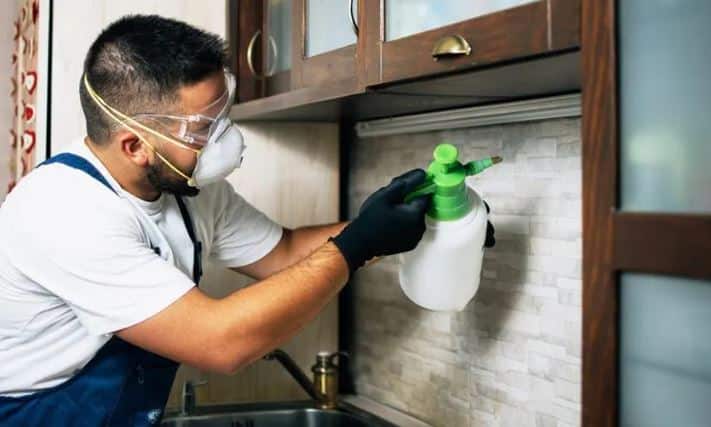Learn About Raiding The Pantry: Defeating Pests In Your Kitchen
Have you ever opened your pantry only to find little uninvited guests making themselves at home? It’s a frustrating experience. Pantry pests can sneak in and wreak havoc on your food supply, but don’t worry—you’re not alone in this battle. Let’s look at defeating these pesky intruders and keeping your kitchen safe and sanitized.

Understanding Pantry Pests
You might wonder what exactly constitutes a pantry pest. These pests are typically insects that invade food stores and can be quite a nuisance. They can contaminate food, spread diseases, and damage your pantry structure. You should be familiarizing yourself with common culprits.
Common Types of Pantry Pests
Here are some of the most common pests that may be hiding out in your pantry:
| Pest | Description | Signs of Infestation |
|---|---|---|
| Indian Meal Moth | Tiny moths with a characteristic brown and gray color. | They are webbing larvae in food items. |
| Flour Beetles | Small reddish-brown beetles are often found in flour. | Tiny holes in packaging, adult beetles. |
| Grain Mites | Tiny, white creatures that thrive in grains. | White specks on food, webbing. |
| Cockroaches | Common household pests that can enter food packaging. | Feces, shed skin, pungent odor. |
| Weevils | Small, elongated beetles are often found in grains. | Holes in grain products, larvae. |
Recognizing these pests is critical to knowing what to look for and how to tackle the problem.
Reasons for Infestation
Now that you know who your enemies are, let’s discuss why they invade your pantry in the first place. Understanding their motives can help you tighten up your defenses.
Poor Food Storage
Improper food storage is a significant factor in making pantries susceptible to pests. Leaving food items unsealed or in compromised packaging can provide easy access for invaders. It’s crucial to store dry goods in airtight containers to keep pests at bay.
Cracks and Crevices
Pests can easily sneak in through tiny cracks or wide-open doors. Gaps around your kitchen can serve as access points. Regularly inspecting your kitchen and sealing up these vulnerabilities is a proactive strategy.
Leftover Food and Spills
Let’s face it—crumbs and spills happen to the best of us. However, those leftover goodies can be a feast for pantry pests. Keeping your kitchen tidy looks excellent and” provides fewer food sources for unwelcome guests.
Preventive Measures to Protect Your Pantry
Prevention is always better than cure. By taking certain precautions, you can shield your pantry from pests.
Create a Pantry Inventory
Keeping track of what you have in your pantry can be surprisingly effective. Not only does it help you manage your grocery shopping, but it also allows you to check for any signs of infestation regularly. Regularly rotating your stock ensures that old items don’t get overlooked.
Store Food Properly
Investing in high-quality, airtight containers can make all the difference in keeping your pantry pest-free. Glass containers and tightly sealed bins help protect food from the outside elements, limiting pest temptations.
Clean Regularly
A clean pantry is a pest-free pantry. Make it a habit to wipe down shelves and check for spills or crumbs regularly. This upkeep can deter pests from wanting to stay for a snack.
Identifying a Pest Problem
If you suspect that pests have invaded your kitchen pantry, acting quickly is imperative. Let’s discuss how you can confirm an infestation.
Visual Inspection
Start with a thorough visual inspection. Look for signs such as:
- Webbing or silk-like material in food containers
- Adult insects or larvae in your products
- Droppings or shells around the pantry area
If you spot any of the signs mentioned, that’s a red flag you shouldn’t ignore.
Smell for Trouble
Some pests, like cockroaches, emit a distinctive odor. If you notice an unusual smell coming from your pantry, please take a look at it. Identifying the smell can also help you track down specific offenders.

How to Eliminate Pantry Pests
If pests have invaded your pantry, there are ways to manage and eliminate the problem effectively.
Clean Out the Pantry
The first step in eliminating pests is to remove everything from your pantry. This helps you see what you’re dealing with and allows for a thorough cleaning. Make sure to check every item carefully for any signs of pests.
Dispose of Infested Food
Identify any infested food products and dispose of them immediately. Remember to check the expiration dates on your items, as expired food can also attract pests.
Clean and Disinfect
Once the pantry is empty, it’s time to clean and disinfect the shelves. Thoroughly wipe down the surfaces with a mixture of vinegar and water or a mild detergent. This will eliminate any lingering pheromones that pests may have left behind and discourage new infestations.
Use Traps and Baits
If you notice a significant presence of pantry pests, traps can help manage the situation. Sticky traps can catch flying insects like moths, while bait traps can lure and kill insects hiding in the corners. Could you make sure to place these traps strategically?
Natural Remedies
If you prefer a non-toxic approach, there are several natural remedies you may consider:
- Diatomaceous Earth: This fine powder can be sprinkled in corners and around food storage areas. It’s harmless to humans and pets but lethal to insects that come into contact with it.
- Essential Oils: Certain scents like peppermint or eucalyptus can deter pests when mixed with water and sprayed in your pantry.
- Bay Leaves: These are known to repel insects. Placing a few dried bay leaves among your stored food items can help keep pests at bay.
When to Call in the Professionals
Sometimes, pantry pests persist despite our best efforts. In these cases, it might be time to call in the experts.
Signs You May Need Help
If you’ve taken all preventive measures and still find pests in your pantry, it may be time to call for professional assistance. Some signs that indicate a serious problem include:
- A high volume of pests (more than you can effectively manage yourself)
- A variety of different types of insects
- Ongoing pest activity despite your efforts
What to Expect from Pest Control Services
When you call in professionals, they will assess the situation, provide an in-depth inspection, and help you determine a course of action. Their expertise allows them to offer targeted solutions that effectively eliminate persistent pests and prevent future infestations.
Maintenance Practices After Pest Control Treatment
Once you’ve eradicated those pesky invaders, it’s crucial to maintain good habits to prevent re-infestation.
Regularly Inspect Your Pantry
Inspecting your pantry should be a regular part of your kitchen upkeep. Look for signs of new pests and check the condition of your food items frequently. This helps catch any problems before they escalate.
Continue Proper Food Storage
To maintain a pest-free pantry, continue using airtight containers and keep food items together clean and organized. Staying consistent with this will help ensure that pests don’t find easy access.
Keep the Kitchen Clean
Good hygiene in your kitchen is essential. Wipe up spills immediately, dispose of trash regularly, and keep counters pristine. Encourage everyone in your household to contribute to this upkeep.

Your Pantry, Your Rules
You have the know-how to keep your pantry free from unwelcome guests. The key lies in understanding the types of pests, adopting preventive measures, and being vigilant about cleanliness and food storage.
Maintaining a pest-free pantry protects your food supply and gives you peace of mind. By using natural remedies or traps, calling in professionals when necessary, and staying vigilant with inspections, you’re already on your way to creating a safe, clean environment. Trust that with a bit of effort and diligence, your pantry can be a pest-free zone where you enjoy cooking and making delicious meals!
==========
Content 10/10/G
